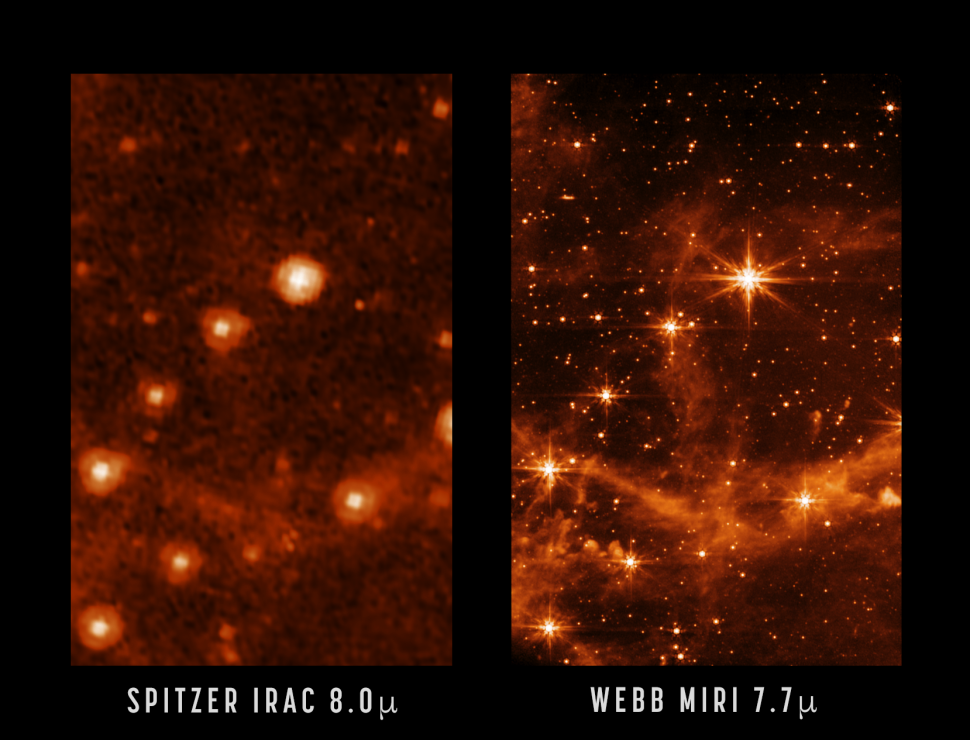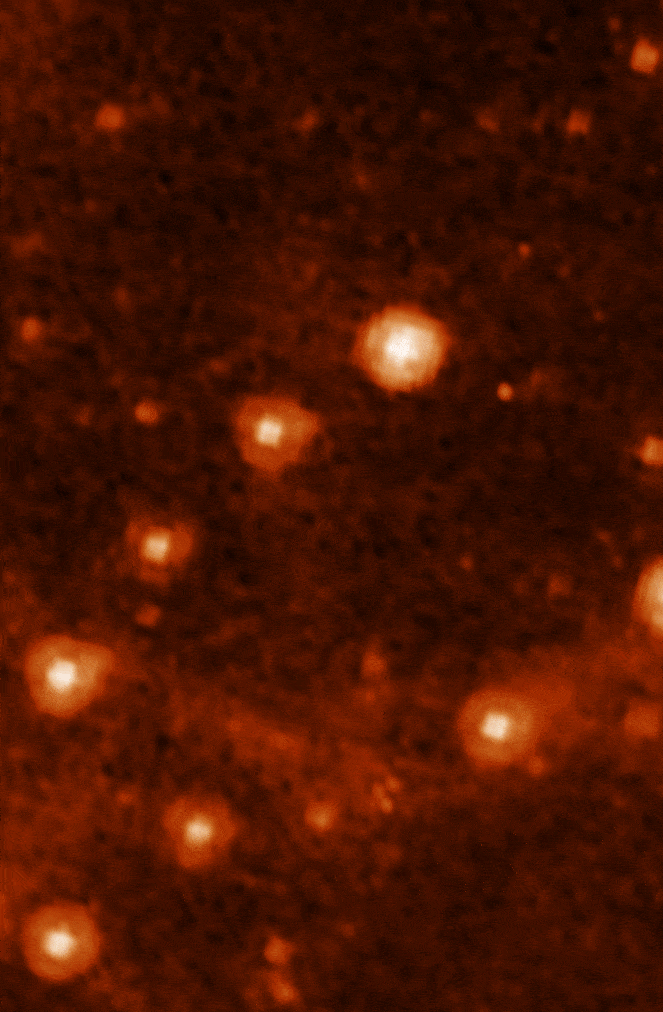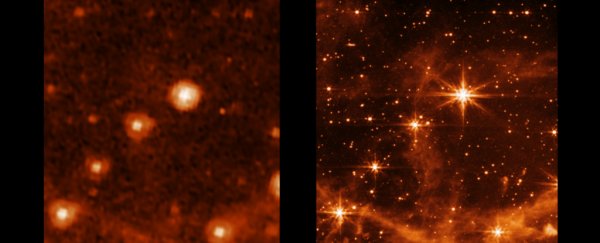All four science instruments on NASA's James Webb Space Telescope have achieved "perfect alignment" in advance of the telescope's official debut this summer, project officials said in a news teleconference on Monday (May 9).
"I'm delighted to report that the telescope alignment has been completed with performance even better than we had anticipated," Michael McElwain, James Webb Space Telescope project scientist at NASA's Goddard Space Flight Center in Maryland said, according to CBS News.
"We basically reached a perfect telescope alignment. There's no adjustment to the telescope optics that would make material improvements to our science performance."
To illustrate the telescope's readiness, NASA shared a teaser image taken by Webb's Mid-Infrared Instrument, or MIRI. The new image shows a side-by-side comparison of observations of a nearby galaxy taken by Webb, versus observations of the same galaxy taken previously by NASA's now-retired Spitzer Space Telescope.
 (NASA/JPL-Caltech, left, NASA/ESA/CSA/STScI, right)
(NASA/JPL-Caltech, left, NASA/ESA/CSA/STScI, right)
Above: The Large Magellanic Cloud, as seen by Spitzer, left, and the JWST, right.
Related: In a historic launch, the Webb Telescope blasts off into space
While the Spitzer image shows a blur of seven or so nearby stars located in the Large Magellanic Cloud (a satellite galaxy that orbits the Milky Way), the Webb image of the same region captures the foreground stars in sharp detail, offset by wispy clouds of interstellar gas and hundreds of background stars and galaxies, captured in what NASA calls "unprecedented detail".
With its instruments aligned, the Webb telescope awaits a final instrument calibration before it officially begins studying distant stars later this summer, NASA said.
In July, the telescope will share its first suite of science images, targeting galaxies and objects that "highlight all the Webb sciences themes … from the early Universe, to galaxies over time, to the life cycle of stars, and to other worlds," Klaus Pontoppidan, Webb project scientist at the Space Telescope Science Institute in Baltimore, said in the news briefing.
 The visual contrast animated. (Spitzer: NASA/JPL-Caltech; MIRI: NASA/ESA/CSA/STScI)
The visual contrast animated. (Spitzer: NASA/JPL-Caltech; MIRI: NASA/ESA/CSA/STScI)
NASA launched the US$10 billion Webb telescope on 25 December 2021, sending the telescope on a 930,000-mile (1.5 million kilometer) journey to its final position in the sky. The telescope is composed of 18 hexagonal mirror segments, fitted together into one large, 21-foot-wide (6.4 m) mirror.
The design allowed the telescope's mirror system to be folded inside a rocket at launch – unlike Webb's predecessor, the Hubble Space Telescope, which has just one primary mirror that measures about 7.8 feet (2.4 m) across, Live Science previously reported.
Scientists predict that Webb will be able to image distant objects up to 100 times too faint for the Hubble Space Telescope to see.
The telescope was designed to observe the dim light of the earliest stars in the Universe, dating to about 13.8 billion years ago – just millions of years after the Big Bang.
Related content:
15 unforgettable images of stars
8 ways we know that black holes really do exist
The 15 weirdest galaxies in our universe
This article was originally published by Live Science. Read the original article here.
